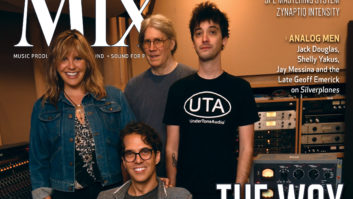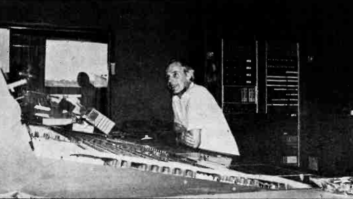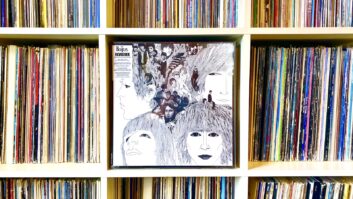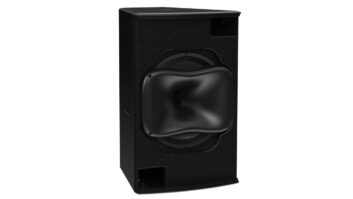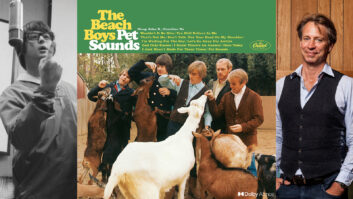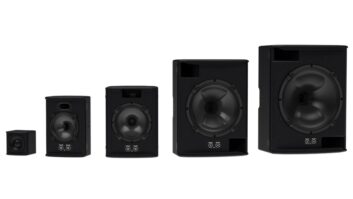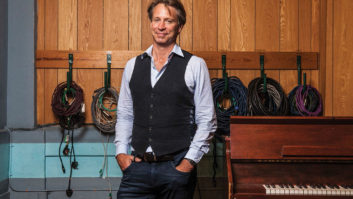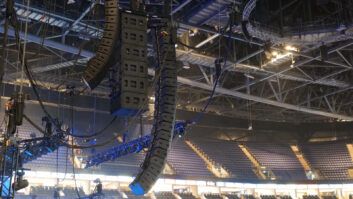What’s cool about living in Woodstock? How about the fact that a house was built in the center of town seven years ago and the owner’s specific intention was to make it a superb party palace. The first floor is completely open, with spaces for guests to mingle. In the far corner stands a stage, which is where this writer first heard Flav Martin perform over the July Fourth weekend.
Martin’s acoustic chops and his inventive styles and techniques are unique. He’s a monster player, and he’s earned accolades throughout the industry, from David Crosby to Gene Simmons—he’s just not a household name. When we spoke after his set, Martin mentioned that he’d just completed an album, dubbed Soul Redemption, with producer Jerry Marotta.
No surprise if the producer’s name rings a bell. Marotta broke into the big time as a teenager when he filled in for the drummer who was supposed to be on the session and helped propel the Orleans track “Still the One” up the charts. In the ensuing decades, Marotta has served as rhythm ace for a number of fairly well-known artists, including Peter Gabriel, Paul McCartney and Hall & Oates. He’s also a big Flav Martin fan.
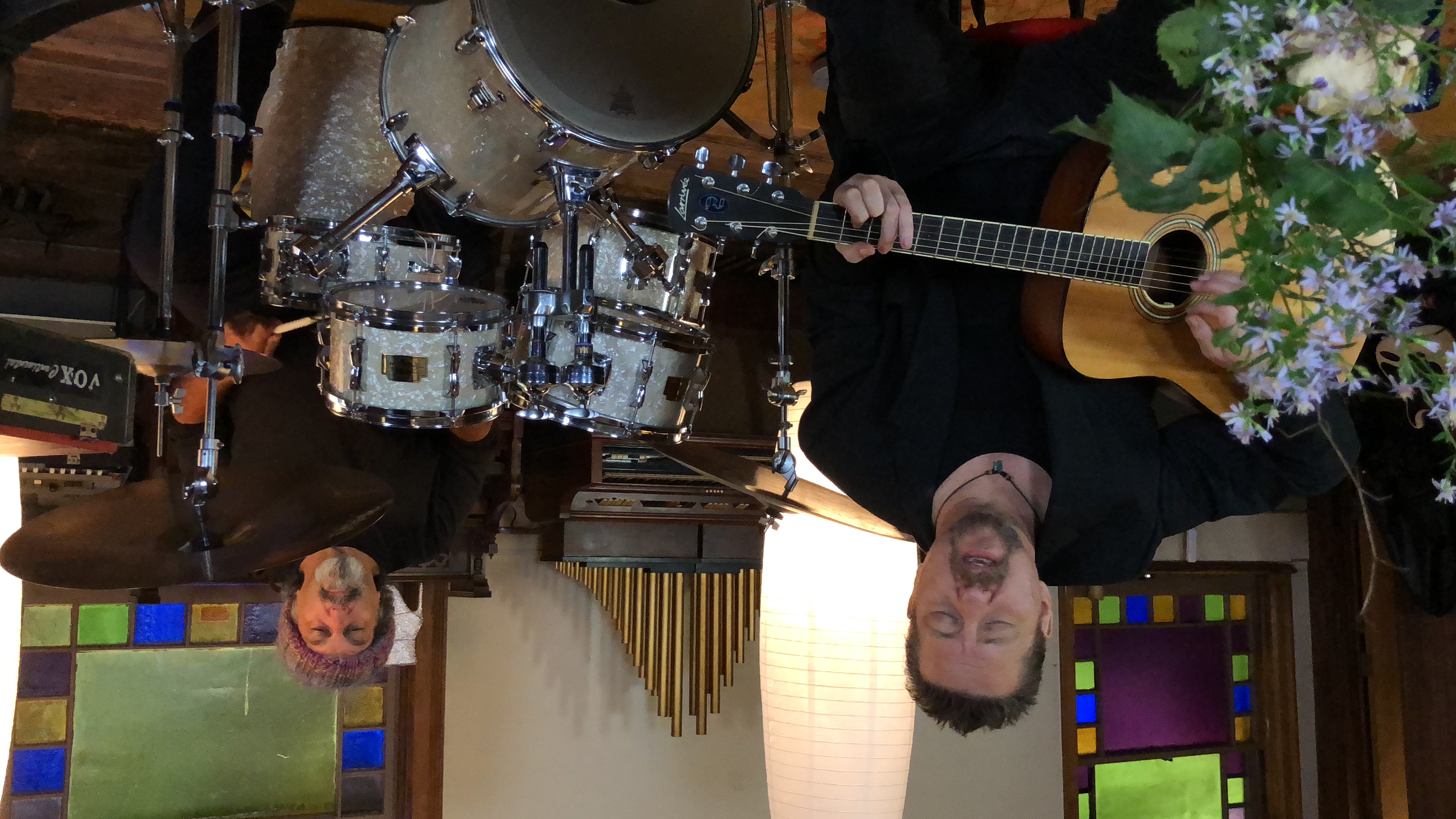
“I joined Orleans in 1975 as a fifth member,” says Marotta. “That allowed drummer Wells Kelly to also play keyboards and guitar in the band. I was only 18 years old! While we were recording the album Waking & Dreaming in Los Angeles, Wells became too sick one day to come into the studio. That was the day we tracked “Still the One.” My good fortune!”
Soul Redemption was recorded at Jersville Studios, Marotta’s project space near Woodstock, and at Dreamland Recording Studios in nearby Hurley, N.Y., through a custom API 48×48 console. At the center of the record, which includes performances by heavyweight bass player Tony Levin and a small but equally impressive group of sideman, sit the performances of Flav Martin.
Related: Producer Marchand Uses Neumann Mics on Sarah McLachlan Album, Nov. 10, 2003
Martin grew up traveling between Jackson Heights, N.Y., and the rural community of High Point, N.J. Music was a constant in the Martin home—a relative, Giovanni Martinelli, succeeded Enrico Caruso at the Metropolitan Opera House—and as a boy, Flav would listen to his brother Larry practice in the family basement with Gene Klein, who would later adopt the surname Simmons and become a founding member of KISS. Early influences included Jim Croce, Joni Mitchell, Jackson Browne, James Taylor and Jimi Hendrix. Traces of them all can be found in Martin’s guitar stylings.
As an adult, he has performed with the likes of Al Stewart, Leo Kottke, Pete Best, Chad and Jeremy, Suzanne Vega, David Crosby and countless others. His playing immediately caught the attention of Marotta.
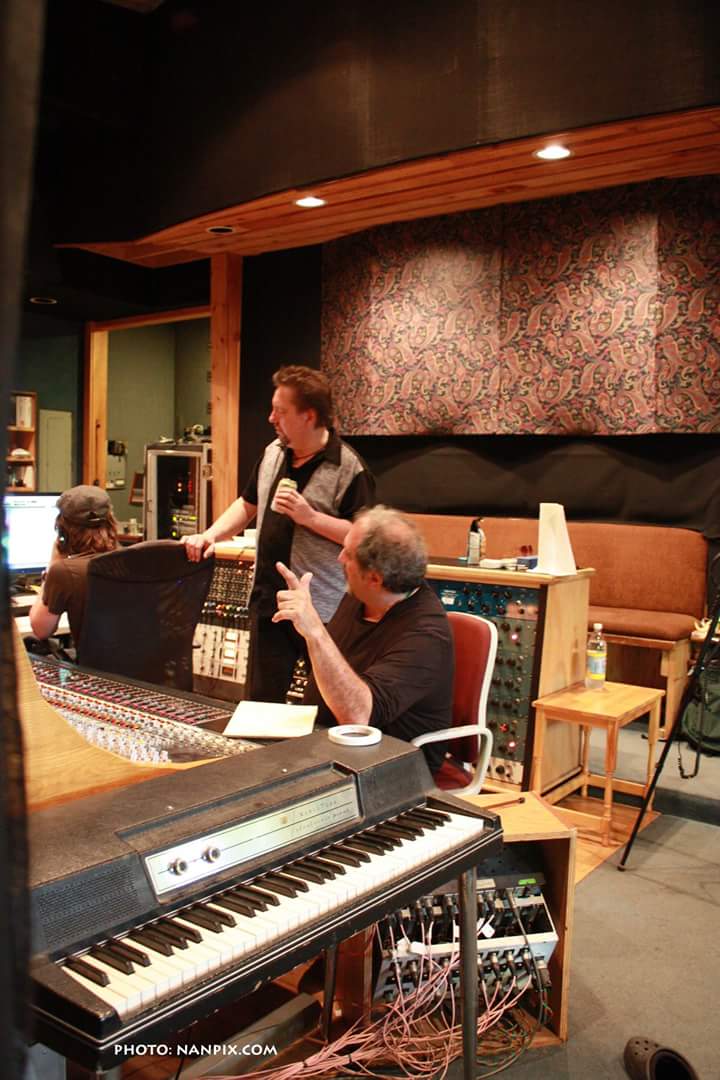
From Drummer to Producer
“Flav initially came here to have me play percussion on his records,” he says. “A mutual friend, Dan Cazio, put us together. Over the course of three days, his style of playing, his singing and his personality impressed me greatly. I think he’s tremendously talented—underrated.
“We agreed that I would produce the project that eventually became Soul Redemption,” he continues. “Flav would play me songs that had multiple sections in them. Together we were able to identify the strongest, or most related, sections and carve out songs from them. Some artists are reluctant to have a producer tamper with their material, but Flav was completely open to working with me in that way.”
Despite Marotta’s fabled history as a drummer/percussionist, he took a minimalist approach to rhythm instrumentation on this record. “We used mostly Taos drums, Native American drums that are like powwow drums,” he explains. “They’re very popular with interior decorators whose clients want a South American motif for their homes.”
To capture the vocal, Martin and Marotta experimented with a variety of microphones. “We tried many world-class mics, including a vintage Telefunken 251 and Neumann 87, 67 and 47 microphones,” says Martin. “But after A/B testing with other mics—I mean hours and hours of testing—I found an unusual combination of a Sennheiser E935 going through a Neve 1073 or GA 1073, processed by an Antares mic modeler, set using the Sony 800G and the Manley Gold reference settings, which took away some of the nasal sound and added good depth.”
When turning to guitar, both Martin and Marotta say that the artist’s experience as a freewheeling soloist introduced some challenges in the studio. “I pretty much screwed up the tracks at first,” laughs Martin. But the challenge was hardly insurmountable.
They decided early on to have the other players listen to Martin’s scratch tracks and then record to a click, which allowed the guitarist to go back to his home studio in Rhode Island to hone his parts.
“I place an AKG 414 between the end of the fret board and the sound hole of my guitar and take one channel directly into a Universal Audio 610,” Martin explains. “I also use a Golden Age Pre-73 going into a Focusrite mic pre, an Avalon 2022 A-to-D, and port that into my PC. Adobe Audition CC is my DAW. I track at 96k/32-bit mostly, but some tracks were sent to Jersville as 48k WAV files. Jerry then synced them all up at Jersville and Dreamland with the rest of the project.”
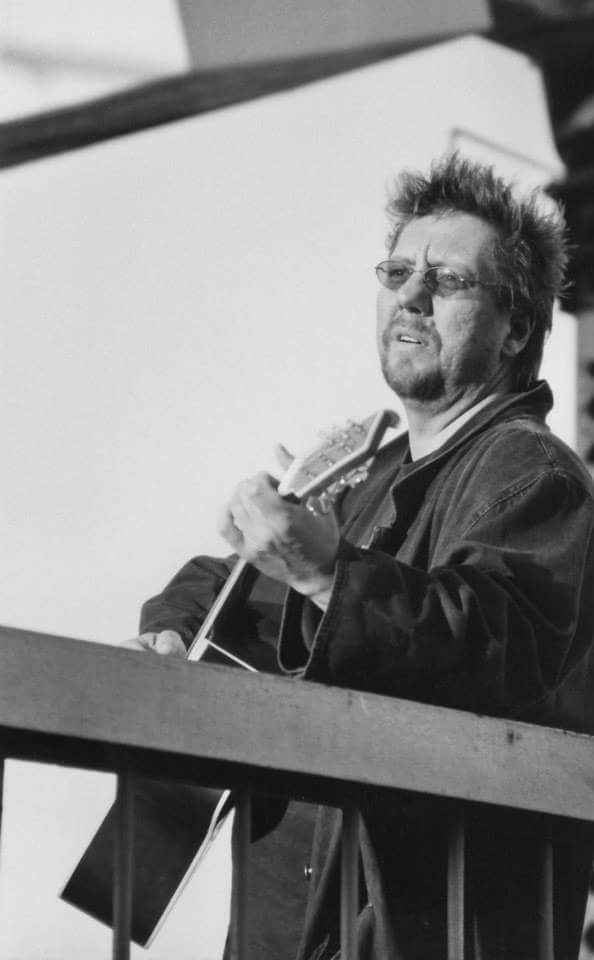
Mixing and Doubling
Michael Cozzi mixed all nine tracks on a Mackie Digital 8-bus console at his Moscozzi Studio in Seattle.
“I have no particular formula when it comes to treating vocals or guitar—or any instrument, for that matter,” Cozzi says. “The arrangement generally reveals what needs to be done. For example, the drums on this record are rather unique-sounding. Jerry mostly played with brushes and hot sticks, with the snare wire turned off. He also used a lot of exotic percussion, which I panned all over the shop.
“This left a lot of room for the vocals, so it just sounded good to double the vocals for thickness,” he adds. “When I say double, I don’t mean a plug-in—I mean grabbing one of Flav’s other takes and blending it in. It’s the slight irregularities that yield a big, natural sound.
Related: Robert Frazza at FOH, June 26, 2018
“As for the guitars, Flav often doubled his acoustic and didn’t play the same on both takes—I assume purposely,” he continues. “I like to pan those kind of guitars quite aggressively left and right. That way you can really hear the dance between the two parts as they play off each other. With the electric guitars, which were beautifully recorded and played, it was just a matter of finding the right place in the mix for them to shine.”
Cozzi mixes to Pro Tools, and confesses, with a laugh, to a love-hate relationship with the product. “I have 2018.7 on my laptop and 12.8.1 on my desktop,” he says. “I usually prep my mixes on my laptop and then transfer them to my main system in order to really dig into the mix. It keeps things a little fresher that way.
“The reason I run two different versions of Pro Tools is because I will use the laptop and the latest version of Pro Tools to test plug-in and hardware compatibility before I update my main system. This way all the bugs have been worked out before I upgrade my main system. Nothing will kill creative energy quicker than problems with your system. For example, I use a 4K 40-inch monitor on my main system, which is not compatible with the latest version of Pro Tools.”
Want more stories like this? Subscribe to our newsletter and get it delivered right to your inbox.
Soul Redemption, a remarkably good record, features Tony Levin (bass), Peter Primamore (piano), Thor Jensen (guitar), Marc Schulman (guitar) and Gary Schreiner (harmonica/accordion). Michael Cozzi mixed the album; Chris Athens was the mastering engineer.
In a nod to modern distribution methods, the self-released Soul Redemption is being sold through the artist’s website and a number of digital outlets.
